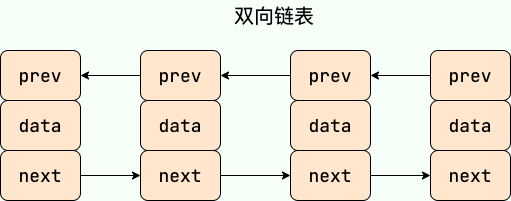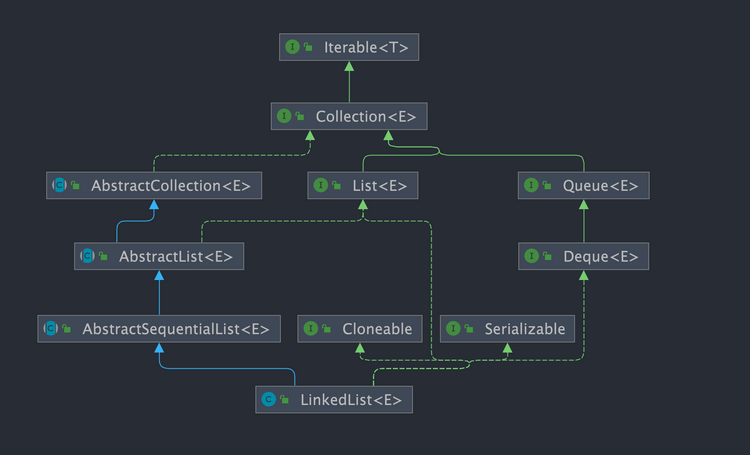| title | category | tag | |
|---|---|---|---|
LinkedList Source Code Analysis |
Java |
|
LinkedList is a collection class implemented based on a doubly linked list, often compared with ArrayList. A detailed comparison between LinkedList and ArrayList can be found in our Summary of Common Java Collection Interview Questions (Part 1).
However, in projects, we generally do not use LinkedList. Any scenario that requires LinkedList can almost always be replaced with ArrayList, and performance is usually better! Even the author of LinkedList, Joshua Bloch, has stated that he never uses LinkedList.
Additionally, do not instinctively think that LinkedList, as a linked list, is the most suitable for scenarios involving element insertion and deletion. As mentioned above, LinkedList only has a time complexity close to O(1) for inserting or deleting elements at the head or tail; in other cases, the average time complexity for insertion and deletion is O(n).
- Insertion/Deletion at the Head: Only the pointer of the head node needs to be modified to complete the insertion/deletion operation, so the time complexity is O(1).
- Insertion/Deletion at the Tail: Only the pointer of the tail node needs to be modified to complete the insertion/deletion operation, so the time complexity is O(1).
- Insertion/Deletion at a Specified Position: It is necessary to first move to the specified position and then modify the pointer of the specified node to complete the insertion/deletion. However, since there are head and tail pointers, we can start from the closer pointer, so on average, we need to traverse n/4 elements, resulting in a time complexity of O(n).
RandomAccess is a marker interface that indicates that the classes implementing this interface support random access (i.e., can quickly access elements by index). Since the underlying data structure of LinkedList is a linked list, with non-contiguous memory addresses, it can only locate elements through pointers and does not support random quick access, so it cannot implement the RandomAccess interface.
Here, we will analyze the core source code of LinkedList using JDK 1.8 as an example.
The class definition of LinkedList is as follows:
public class LinkedList<E>
extends AbstractSequentialList<E>
implements List<E>, Deque<E>, Cloneable, java.io.Serializable
{
//...
}LinkedList inherits from AbstractSequentialList, which in turn inherits from AbstractList.
Having read the source code of ArrayList, we know that ArrayList also inherits from AbstractList, so LinkedList will have many similar methods to ArrayList.
LinkedList implements the following interfaces:
List: Indicates that it is a list, supporting operations such as adding, deleting, and searching, and can be accessed by index.Deque: Inherited from theQueueinterface, it has the characteristics of a double-ended queue, supporting insertion and deletion of elements from both ends, making it convenient for implementing data structures like stacks and queues. Note thatDequeis pronounced "deck" [dɛk], which most people mispronounce.Cloneable: Indicates that it has copy capabilities, allowing for deep or shallow copy operations.Serializable: Indicates that it can perform serialization operations, meaning it can convert objects into byte streams for persistent storage or network transmission, which is very convenient.
The elements in LinkedList are defined through Node:
private static class Node<E> {
E item; // Node value
Node<E> next; // Pointer to the next node (successor node)
Node<E> prev; // Pointer to the previous node (predecessor node)
// The order of initialization parameters is: predecessor node, itself node value, successor node
Node(Node<E> prev, E element, Node<E> next) {
this.item = element;
this.next = next;
this.prev = prev;
}
}LinkedList has a no-argument constructor and a


